Newsletter
Property on request
Did you not find a property in our offering that would fully meet your requirements?
Send us a message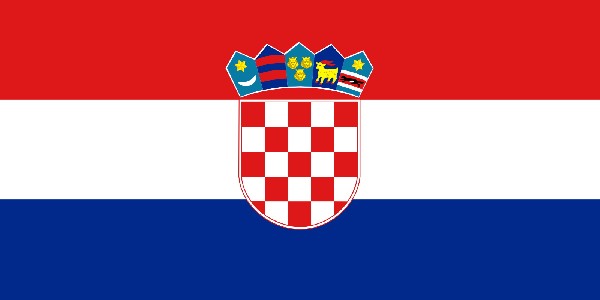 The official name is the Republic of Croatia (Republika Hrvatska) and it is located on the borderland of Middle and South-eastern Europe. Croatia borders Slovenia, Hungary, Bosnia and Herzegovina, Serbia and Montenegro. It stretches from the Alpine slopes down to the Pannonian Valley towards the riverbanks of Danube and Drava. Croatia can be divided into three geographical parts according to their characteristic natural features, cultural and historical heritage. These are the coastal region, the mountain region and the region of Pannonia. Like many European countries, Croatia rose on the ruins of the Roman Empire. When the Romans arrived in the territory of what is Croatia today, the country was organised into several principalities. The first Croatian king Tomislav I. united these principalities in 925 and founded the Croatian state.
The official name is the Republic of Croatia (Republika Hrvatska) and it is located on the borderland of Middle and South-eastern Europe. Croatia borders Slovenia, Hungary, Bosnia and Herzegovina, Serbia and Montenegro. It stretches from the Alpine slopes down to the Pannonian Valley towards the riverbanks of Danube and Drava. Croatia can be divided into three geographical parts according to their characteristic natural features, cultural and historical heritage. These are the coastal region, the mountain region and the region of Pannonia. Like many European countries, Croatia rose on the ruins of the Roman Empire. When the Romans arrived in the territory of what is Croatia today, the country was organised into several principalities. The first Croatian king Tomislav I. united these principalities in 925 and founded the Croatian state.
Croatia, and particularly its coast bathed by the Adriatic Sea, has become one of the favourite holiday destinations. Even though most people are attracted by the sea and beaches, the country has much more to offer – beautiful national parks (there are 8 national parks in Croatia and their total area is 472 km2 of dry land), many historical monuments, cultural and sporting activities, specialities of local cuisine, etc. After mentioning several places such as the cities of Split, Trogir, Dubrovnik, Makarska Riviera, Plitvice lakes or the Krka national park, images of exotic environments ideal for recreation follow shortly. The Croatian coast is not just rocks or pebbles as many people think. You can find a variety of coastal types there, ranging from rocky, pebbly, sandy, steep, slowly rising, to flat ones by river mouths.
Croatia is also visited by a number of people with yachts because of the relatively calm nature of the Adriatic Sea and incredible number of islands (1185; 67 of which are inhabited) offering beautiful virgin bays for anchoring. The Croatian government has been investing intensively in projects promoting the region's attractiveness. These are mainly great improvements in and expansion of the infrastructure. Traveling to Croatia by car becomes faster and more comfortable every year. 43 km of new motorways were built in 2006, 75.9 km in 2007 and 41.5 km were built in 2008. By June 2009 the total length of finished motorways was 1,078 km and the construction of 339.6 km more is planned. Along the roads there are petrol stations, restaurants or other refreshment facilities to make your long drive more pleasant. Ivo Josipović has become the new president. As the media has already informed us, his top priority is for Croatia to join the European Union. This was planned for 1 July 2013 and it happened.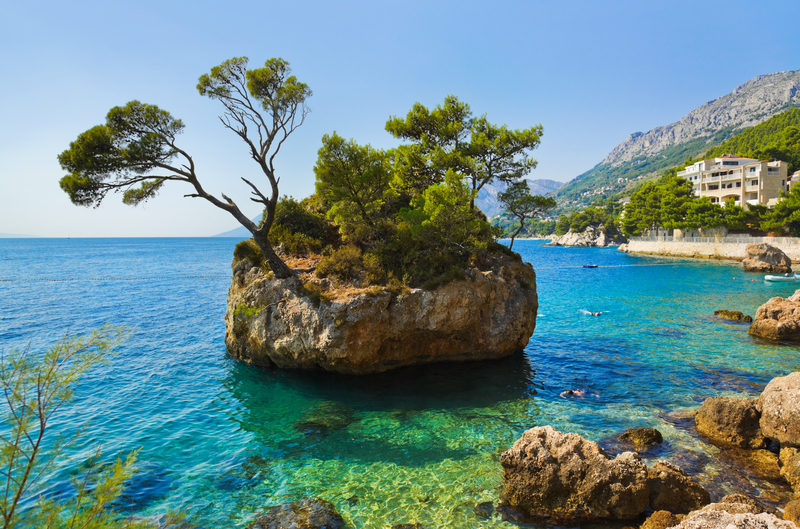
Area: 56,542 km2 of dry land + 31,067 km2 of coastal sea
Number of inhabitants: 4.80 million
Capital city: Zagreb (700,000 inhabitants)
Climate: subtropical on the coast, Mediterranean with dry and hot summers and wet, but mild winters, inland with continental climate.
Length of the coast: 5,835 km, out of which 4,057 km are coasts of islands
Number of islands: 1,185, 67 are inhabited
Highest mountain: Dinara (1,831 m)
International Croatian phone code: +385
Croatia is a combination of the Mediterranean, mountains and the lowlands of Pannonia, which together create unique and harmonic collection of natural assets. The Adriatic Sea boasts one of the most rugged coasts in Europe with an incredible 1,185 islands and isles, only 67 of which are inhabited. Even G. B. Shaw, the famous writer, said that God wanted to top his work on the last day of Creation, so he used tears, stars and breath to create Kornati – a beautiful archipelago boasting 147 islands of various shapes and sizes that offer 'heavenly' holidays mainly for sailors and divers from all over the world. Inland Croatia also has a lot to offer. There are woods, rivers and mountain streams rich in fish, the deep ravines of Gorski Kotar, the crystal-clear Plitvice lakes, picturesque villages, romantic chateaus and manors, vineyards and much more.
Summer is the most popular season for tourists. As well as staying by the sea, you can spend your time in picturesque villages or thermal spas with mineral springs: Varazdinske, Tuheljske, Stubicke and Krapinske, Lipik, Daruvar or Topusko inland, and by the sea coast Losinj, Umag, Opatija, Crikvenica, Hvar, Makarska, Vela Luka and Istarske Spa in Istria. Croatia definitely has a lot to offer gourmets and those who like good food. Croatian cuisine is very diverse. Each region has its own food. We recommend you try the grilled sleeve fish or fish soup with seafood or Dalmatian wines which have been famous since ancient times. That leads us to other places worth visiting – wine cellars. When you visit them on the coast of Istria, the focus is on red wines called Teran, Cabernet and in Dalmatia on Opolo, Plavac, Dingac and Postup. By the coast, there are also quality red wines produced, such as Pinot, Malvazija and Kujundzusa. By the Mediterranean ask for Traminac, Burgundac, Graševina a Kraljevina.
Istria is one of the most developed regions of Croatia and it is the closest and most accessible from Western Europe. Its character can be compared to Tuscany or Provence. The first inhabitants of Istria were members of the Histri tribe. In "Green Istria" there are countless vineyards, picturesque towns and villages. Among the more famous coastal towns of Istria are:
Porec
Probably the most visited place in Istria, famous for its wide range of hotels, blue and green lagoons and Isle of St. Nicholas nearby. As a Roman colony from 2nd century BC, Porec is a city with many well-preserved monuments dating back to ancient Rome. You can find some beautiful parks and gardens there as well.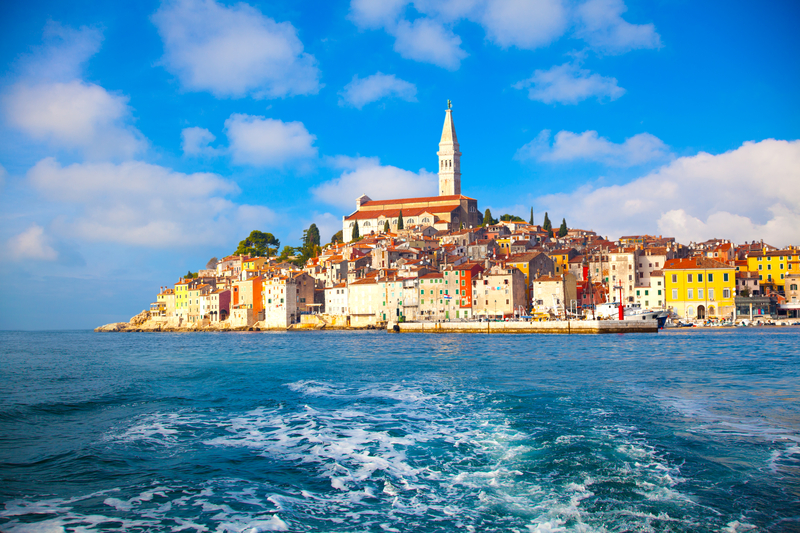
Rovinj
A famous resort with many historical buildings and palaces from Renaissance and Baroque times. Rovinj is an enchanting city with narrow stone alleys. We recommend visiting St. Euphemia Cathedral built in 1736, which is the biggest Baroque building in Istria with a tower reaching 60 metres in height. The city of Rovinj was originally an island. It was separated from the mainland 250 years ago by a narrow canal, which was covered in 1763. Rovinj is a lively place, which attracts tourists with a number of bars, restaurants and galleries.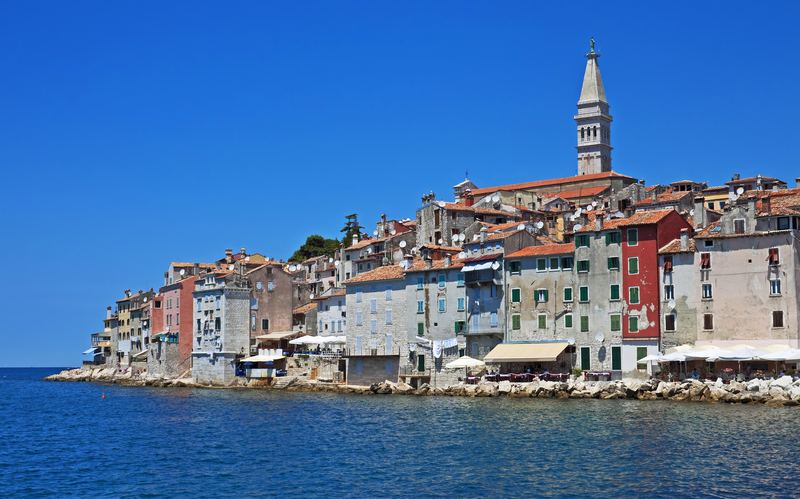
Umag
A city built on the ruins of the Roman Empire. Narrow paved streets have remained since those times and create exceptional and enchanting atmosphere. The coast is full of nice bays with a 20-kilometre-long Riviera. Umag is famous for its port and as an international tennis centre, where the 'Croatian Open', a tennis tournament is held every year.
Brijuni Archipelago
This consists of 2 large and 12 small islands on the Western coast of Istria. The archipelago is one of seven national parks in Croatia, abundant in rare species of plants and animals. There are also several exceptional monuments of the Roman Empire in the archipelago.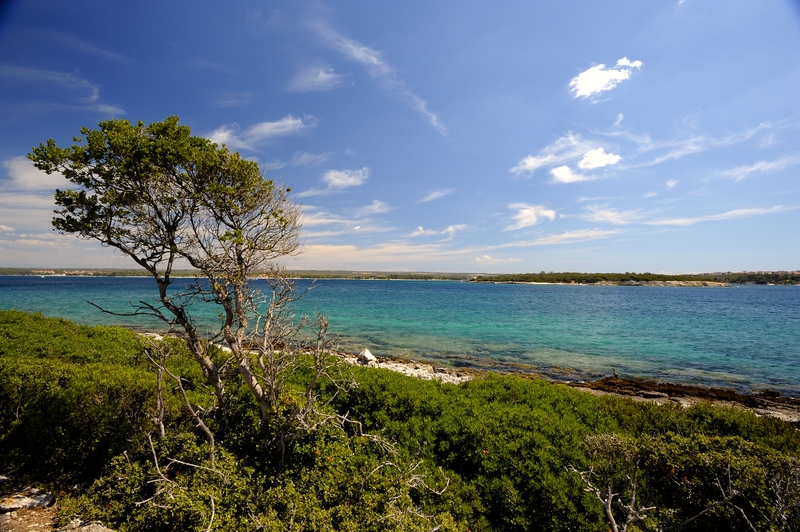
Pula
An ancient city in the south of Istria famous mainly for its 2,000 year-old amphitheatre, one of the best-preserved in the world. Pula, the biggest city and port in Istria is an attractive place for many tourists to spend their holidays. In summer, Pula Opera Festival and Pula International Film Festival and other interesting events are held here every year. Let us also mention the Triumphal Arch of the Sergi, the Temple of Augustus and the Franciscan church – some other often-visited monuments.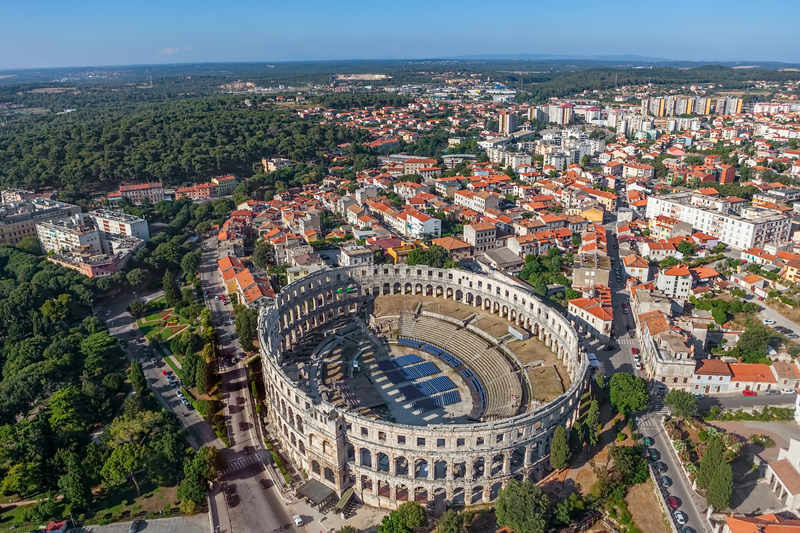
Opatija
One of the most popular Adriatic resorts. Opatija is also visited during the winter months in Europe. It is famous for its beautiful parks, botanical gardens and countless numbers of cosy restaurants and modern hotels.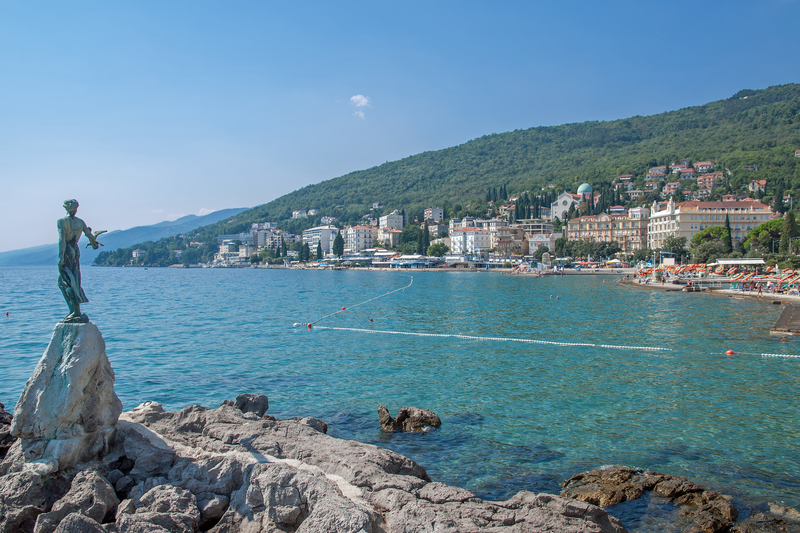
Further south of the city of Zadar, the area known as Dalmatia starts. It's full of long beaches, pine woods and ancient cities such as Zadar, Šibenik, Split, Trogir, Omiš and Dubrovnik demonstrating the extensive cultural and historical heritage of Croatia. You can also find a number of often-visited islands such as Hvar, Brač, Šolta, Korčula, Vis, Mljet and other islands in Dalmatia. In Dalmatia, you can enjoy good wine, travarica – home-made brandy, fish, seafood, etc. Among the more famous coastal cities of Dalmatia are:
Zadar
The northernmost city of Dalmacia, with 73.000 inhabitants. Its history goes back to the 9th century BC, when it was a settlement of the Illyrian tribes. Later, it became a Roman city then went over to the Venetian Republic, after the 1st World War it fell to Italy and after the formation of Yugoslavia it became a part of it. The Romans played an important role in the development of the city, as they built city walls, an amphitheatre, an aqueduct and even a spa and a canal system. The influence of the Venetian dominion is also apparent. Directly in the middle of the city we are captivated by the two-floor St. Donatus Church with the adjacent imposing St. Anastasia Cathedral from the 14th century. Both buildings have become local symbols. There are also many festivals and other cultural events in Zadar. You will surely be intrigued by classical music concerts in the mystical atmosphere of St. Donatus Church, by the Zadar Theatre Summer or by the New Theatre Festival. Zadar is a city where you can enjoy yourself not only by sunbathing on the beach or doing sports. Your stay here can be fascinated and entertained by historical monuments, picturesque coves and a lively programme for tourists and cultural events.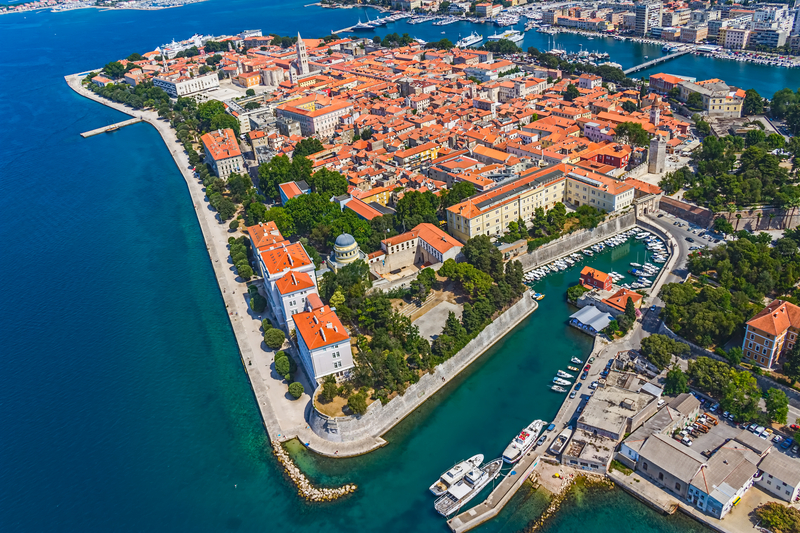
Šibenik
The second biggest city and port in Northern Dalmatia, which is situated near the sea mouth of Krka River. The first reference to Šibenik comes from 1066 from the chart of Petar Krešmir IV, a Croatian king. Contrary to other cities, which were founded by the Romans or Illyrians, Šibenik has been a Croatian city since its foundation. It is an important tourist centre with many beautiful sights. St. James Cathedral in Šibenik was entered into the UNESCO World Cultural Heritage List. Šibenik is also an important transport junction, traffic junction, railway connection to the Zagreb – Knin – Split line and a port for ferries to nearby islands. The city is surrounded by a great number of islands. Murter, Krapanj, Kaprije, Prvic, Zlarin and Žirje are inhabited. Zlarin, famous for coral processing is also worth visiting and you can find an exhibition on diving history and a modern diving school in a brand new hotel called Spongiola. The island is also popular for sea pearl hunting.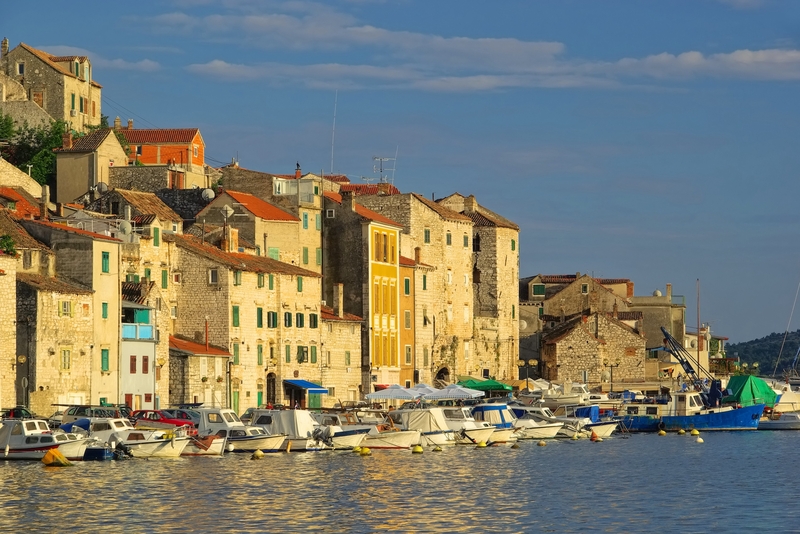
Trogir
One of the most typical towns on the Adriatic coast, which is also one of the most beautiful, Trogir was deservedly entered into the UNESCO World Cultural Heritage List. It is a jewel between bastioned towns with a labyrinth of medieval alleys. There is no other city in Dalmatia that retained its cultural life, which has flourished along the coast despite various foreign influences, so perfectly. There are also the St. Laurence Cathedral in the town, which was built during the 13th – 15th centuries, churches, palaces and fortresses dating between the 14th and 17th centuries, built mainly in the Renaissance and Roman styles. The St. Laurence Cathedral, built in the Roman style, is considered a great asset not only for the town, but also for the whole Croatia. Its construction started in the 13th century in the Roman style and was already finished by the 15th century. Meanwhile, the Gothic style had already become popular and we can see this in the building as well. In the evenings after sunset, local restaurants and cafés start to fill up with people. They come for tasty dinners and beer or to have a good time at a disco. The town is connected with Čiovo Island by a bridge.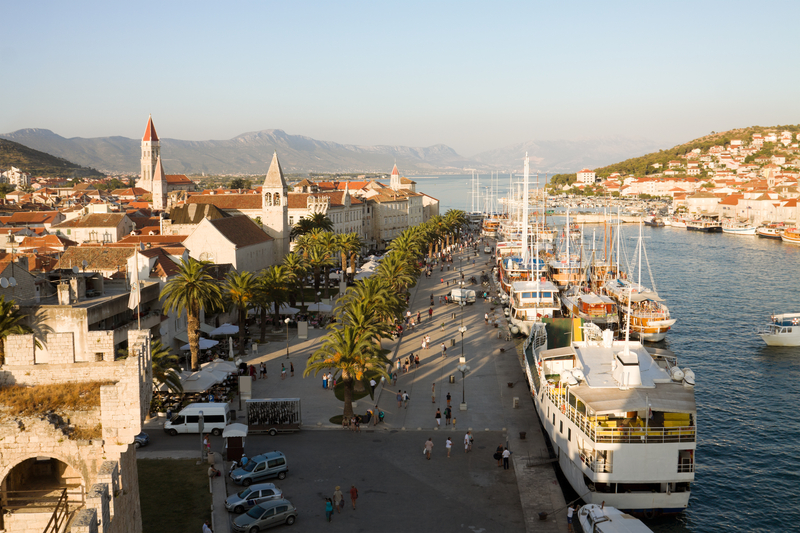
Čiovo Island
A very sought-after place with family hotels, apartments, restaurants, bars and cafes along pebble beaches, where you can enjoy lovely evenings with live music. On the island you can also find places without a trace of other humans, such as natural cliffs surrounded by pine woods, small bays used by nudists, etc.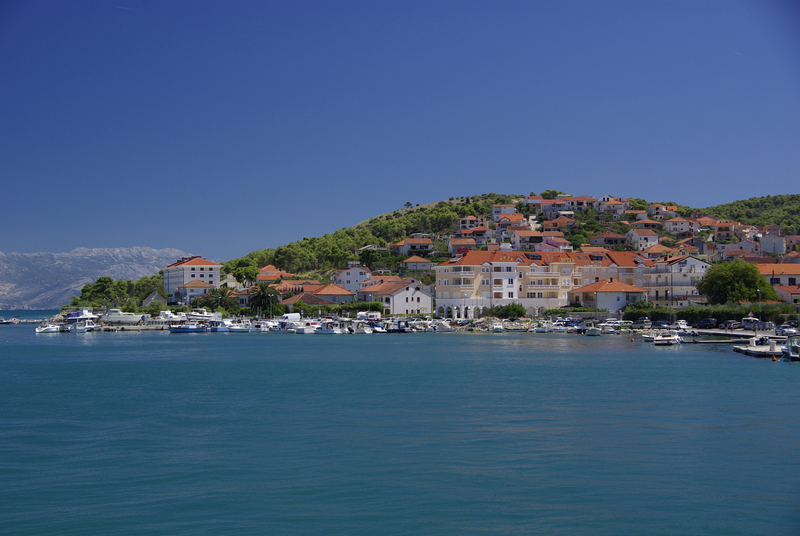
Split
The second biggest city in Croatia with almost 200,000 inhabitants is a Dalmatian centre of economy, education, sport and tourism. The city is also an important marine transport junction. Among the regular ferry lines are: Split – Ancona (Italy) and Rijeka - Zadar - Split - Stari Grád - Korčula -Sobra - Dubrovnik - Bari and also domestic: Split - Rogač (Šolta), Split - Supetar (Brač), Split - Vis, Split - Stari Grád (Hvar) and Split - Hvar - Vela Luka (Korčula) - Uble (Lastovo). There is also an international airport in Split. On the coast of the city there are several hotels, beaches and ports. We can also find a number of historical monuments in Split. Among the most significant is the Diocletian's Palace which is an unbelievable size of 31,000 m2. Other sights worth mentioning are, for example, the remains of a stately castle in Split in the form of Marina Tower, the Museum of Croatian Archaeological Monuments, the National Gallery or the statue of Gregory of Nin, a bishop from the 10th century, a monument typical for Split. A busy promenade by the port also offers a nice walk, with its bars, restaurants and hotels. As well as typical city attractions, Split also offers a number of unique historical monuments, and Marjan, a protected nature reserve, which can be reached on foot from the city centre.
Omiš
A small and popular town in Dalmatia. It is situated less than 30 km south-east of Split at the place where the Cetina River meets the Adriatic Sea. Omiš was settled by the Illyrian tribes in ancient times and later by the Romans. In the town there are a number of interesting houses and palaces dating back to various eras. St. Michael's Church from 1629 is situated on the main street of the old town. Above the church, there is Peovica, the last preserved part of the city walls, and the remains of a Stari Grad fortress at an altitude of 311 m (also called Fortica). On the rocks above the town rises Mirabela, the remains of an old pirate fortress (also called Peovica) which can be reached from the old part of the town. Omiš is an important tourist centre, where the popular Omiš Riviera starts. Omiš Riviera is located on the south-east of Omiš and includes the smaller but picturesque towns of Ruskamen, Lokva Rogoznica, Mimice, Pisak and others. Omiš is known for its large sandy beach and is a popular area for sport - water sports, football, basketball, beach volleyball, tennis, skittles, rock climbing, rogallo flying, paragliding, cycling, etc. Omiš is also the centre of entertainment for the whole area – discos and dance parties, etc.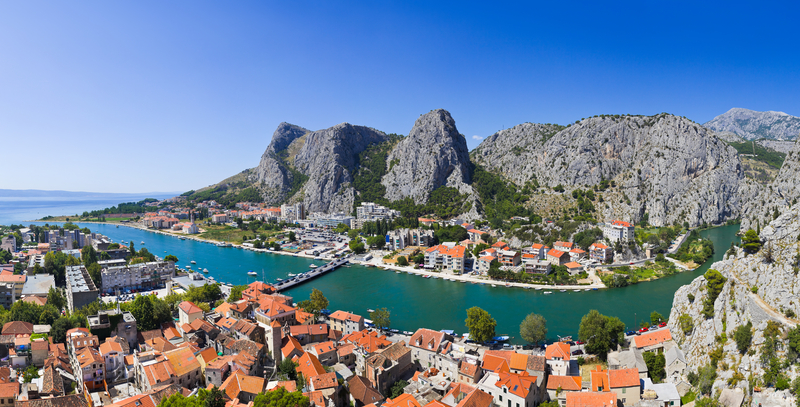
Dubrovnik
A city and port in southern Dalmacia, which is located at the foot of chalk mountains with unique surrounding tropical vegetation and historically unique buildings. It is one of the most important tourist centres of the Adriatic Sea. It is also called "The Pearl of the Adriatic." The city of Dubrovnik has always profited from sea-trade. In Medieval times it was "Dubrovnik Republic" and started to compete with Venice as the only city state of the eastern Adriatic. It belongs to the group of the most influential republics in the Middle Ages, together with Venice, Genoa, Pisa and Amalfi. Dubrovik was entered into the UNESCO World Cultural Heritage List. During its famous period of being a sea republic, Dubrovnik quickly thrived and offered its inhabitants services and comfort other Croatian cities could only dream about. In the 14th century, the first pharmacy which is still open today, a medical clinic, poorhouse and one of the first world quarantine hospitals were established. In the 15th century a city orphanage, public aqueduct and arboretum (the oldest in the world) were added. The abolition of slavery in 1418 proves that Dubrovnik valued personal freedom. From that year, ships from the Dubrovnik fleet sailed under a new white flag with the Latin word 'Libertas' (liberty). The real symbols of Dubrovnik are its walls. Thanks to them, the city has never been conquered by an enemy army and provided absolute safety to its inhabitants. The city was originally protected by wooden palisade. It was soon replaced with stone walls which were constantly being strengthened and broadened. The appearance of todays' walls comes from the 12th to 17th centuries and they are one of the best-preserved defence systems in Europe.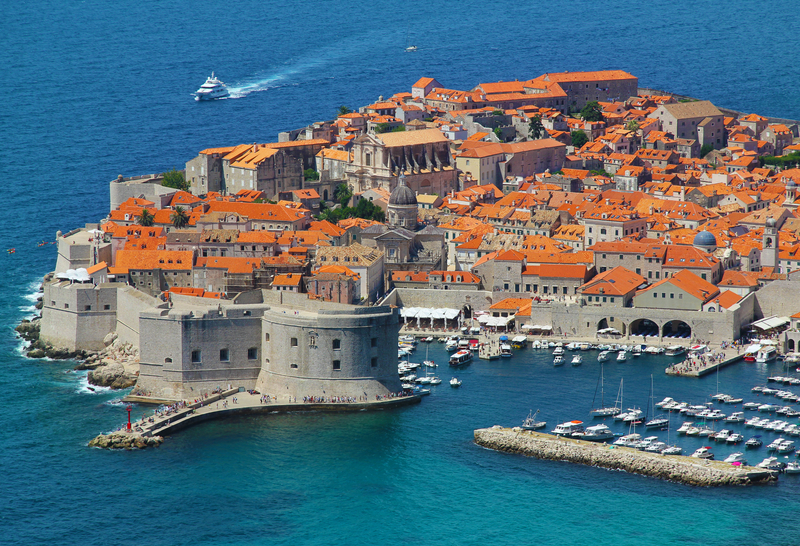
A new amendment to the Act on Real Estate became valid in February 2009 and it guarantees EU citizens the same rights as Croatian citizens. That means that foreigners can buy properties directly (as individuals) without needing to form a legal entity with a seat in Croatia. The only exception is arable land and woodland. The said amendment removed a small obstacle in the process of buying Croatian properties and significantly increased the number of properties sold, particularly along the coast which are very attractive not only for investors but also for tourists and lovers of the crystal-clear Adriatic and Croatia.
Although the whole process of buying properties has become more simple thanks to the amendment to the Act on Real Estate from February 2009, we highly recommend using the services of a "decent" real estate agency when buying a property as the agency will ensure everything that is necessary to acquire ownership title without any problems. Croatia has a reputation for a big number of properties without planning permission, 'chaos' in the documentation (mainly with older properties) which in turn can mean that the ownership title is not conveyed to the buyer. In addition, according to the amendment to the Act on Real Estate from 2011, it is not possible to make an entry into the Real Estate Cadastre without proper planning permission.